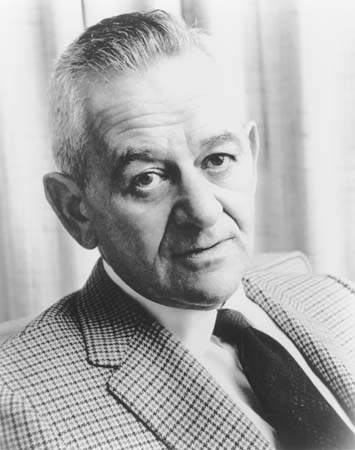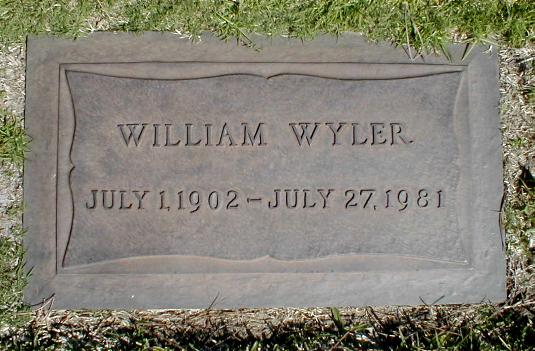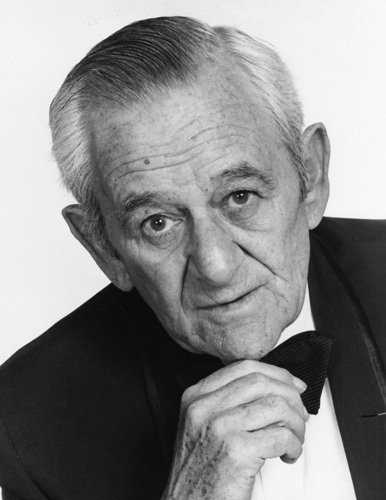William Wyler (William Wyler)

William Wyler was born to a Jewish family in Mulhouse, Alsace (then part of the German Empire). His Swiss father, Leopold, started as a traveling salesman which he later turned into a thriving haberdashery business in Mulhouse. His mother, Melanie (née Auerbach; died February 13, 1955, Los Angeles, aged 77), was German, and a cousin of Carl Laemmle, founder of Universal Pictures. During Wyler’s childhood, he attended a number of schools and developed a reputation as “something of a hellraiser”, being expelled more than once for misbehavior. His mother often took him and his older brother Robert to concerts, opera, and the theatre, as well as the early cinema. Sometimes at home his family and their friends would stage amateur theatricals for personal enjoyment. Wyler was supposed to take over the family business. After World War I he spent a dismal year working in Paris at 100.000 Chemises selling shirts and ties. He was so poor that he often spent his time wandering around the Pigalle district. After realizing that Willy was not interested in the haberdashery business, his mother contacted her distant cousin about opportunities for him. Laemmle was in the habit of coming to Europe each year, searching for promising young men who would work in America. In 1921, Wyler, while traveling as a Swiss citizen (his father’s status automatically conferred Swiss citizenship to his sons), met Laemmle who hired him to work at Universal Studios in New York. As Wyler said: “America seemed as far away as the moon.” Booked onto a ship to New York with Laemmle upon his return voyage, he met a young Czech man, Paul Kohner (later the famous independent agent), aboard the same ship. Their enjoyment of the first class trip was short-lived as they found they had to pay back the cost of the passage out of their $25 weekly income as messengers to Universal Pictures. After working in New York for several years, and even serving in the New York National Guard for a year, Wyler decided he wanted to go to Hollywood and be a director.
Around 1923, Wyler arrived in Los Angeles and began work on the Universal Studios lot in the swing gang, cleaning the stages and moving the sets. His break came when he was hired as a second assistant editor. His work ethic was uneven with Irving Thalberg nicknaming him “Worthless Willy.” After some ups and downs (including getting fired), he focused on becoming a director. He started as a third assistant director and by 1925 he became the youngest director on the Universal lot directing the Westerns that Universal was famed for turning out. In 1928, he became a naturalized United States citizen. He directed his first non-Western, the lost Anybody Here Seen Kelly?, in 1928. This was followed by his first part-talkie films, The Shakedown and The Love Trap. He proved himself an able craftsman, and in the early 1930s began directing such films as Hell’s Heroes, Tom Brown of Culver, and The Good Fairy. He became well known for his insistence on multiple retakes, resulting in often award-winning and critically acclaimed performances from his actors. After leaving Universal he began a long collaboration with Samuel Goldwyn for whom he directed such classics as Dodsworth (1936), These Three (1936), Dead End (1937), Wuthering Heights (1939), The Westerner (1940), The Little Foxes (1941) and The Best Years of Our Lives (1946).
Laurence Olivier, whom Wyler directed in Wuthering Heights for his first-ever Oscar nomination, credited Wyler with teaching him how to act for the screen, despite clashing with Wyler on multiple occasions. Olivier would go on to hold the record for the most nominations in the Best Actor category at nine, tied with Spencer Tracy. In 1950, Wyler and Olivier made a second film together, Carrie, which was not a commercial success. Bette Davis received three Oscar nominations for her screen work under Wyler, and won her second Oscar for her performance in Wyler’s 1938 film Jezebel. Charlton Heston won his only nomination and Best Actor Oscar for his work in Wyler’s 1959 Ben-Hur. Barbra Streisand won 1968’s Best Actress Oscar (as did Katharine Hepburn for The Lion in Winter, in the only tie in Oscar history for this category) as entertainer Fanny Brice in Streisand’s debut film, Funny Girl. Audrey Hepburn won an Oscar in her debut performance in Roman Holiday. Fourteen actors won Oscars under Wyler’s direction. In 1941, Wyler directed Mrs. Miniver, a story of a middle class English family adjusting to the war in Europe. Mrs. Miniver won Wyler his first Academy Award for Best Director, as well as another five Oscars. A perfectionist, Wyler earned the nickname “90-take Wyler”. On the set of Jezebel, Wyler forced Henry Fonda through 40 takes of one particular scene, his only guidance being “Again!” after each take. When Fonda asked for more direction, Wyler responded, “It stinks.” Similarly, when Charlton Heston quizzed the director about the supposed shortcomings of his performance in Ben-Hur, Wyler simply told Heston to “Be better.”
Between 1942 and 1945, Wyler, who became a United States citizen in 1928, served as a major in the United States Army Air Forces and directed a pair of documentaries: The Memphis Belle: A Story of a Flying Fortress (1944), the story of a Boeing B-17 and its U.S. Army Air Force crew; and Thunderbolt! (1947), with Lester Koenig and John Sturges, highlighting a P-47 fighter-bomber squadron in the Mediterranean. Wyler filmed The Memphis Belle at great personal risk, flying over enemy territory on actual bombing missions in 1943; on one flight, Wyler passed out from lack of oxygen. Wyler’s associate, cinematographer Harold J. Tannenbaum, was shot down and perished during the filming. Working on Thunderbolt! Wyler was exposed to such loud sound that he passed out. When he awoke, he found he was deaf. Later partial hearing came back in his left ear. Wyler returned from the War a disabled veteran. Returning from the War and unsure whether he could work again, Wyler turned to a subject that he knew well and directed a film which captured the mood of the nation as it turned to peace after the war, The Best Years of Our Lives (1946). This story of the homecoming of three veterans from World War II dramatized the problems of returning veterans in their adjustment back to civilian life. Arguably his most personal film, Best Years drew on Wyler’s own experience returning home to his family after three years on the front. The Best Years of Our Lives won the Academy Award for Best Director (Wyler’s second) and Academy Award for Best Picture, as well as seven other Academy Awards.
During the immediate postwar period, Wyler directed a handful of critically acclaimed and influential films. In 1949, he directed The Heiress, which earned Olivia de Havilland her second Oscar and garnered additional Oscars for Best Art Direction, Best Costume Design, and Best Music. Roman Holiday (1953) introduced Audrey Hepburn to American audiences and led to Oscars for Best Actress (Hepburn), Costume Design (Edith Head), and Best Writing (Dalton Trumbo). Friendly Persuasion (1956) was awarded the Palme d’Or (Golden Palm) at the Cannes Film Festival. In 1959, Wyler directed Ben-Hur, which won 11 Oscars (a feat equalled only by Titanic in 1997 and The Lord of the Rings: The Return of the King in 2003). Wyler won his third Academy Award for Best Director for Ben-Hur. Wyler’s films garnered more awards for participating artists and actors than any other director in the history of Hollywood. He received 12 Oscar nominations for Best Director in total, while dozens of his collaborators and actors won Oscars or were nominated. In 1965, Wyler won the Irving Thalberg Award for career achievement. Eleven years later, he received the American Film Institute Life Achievement Award. In addition to his Best Picture and Best Director Oscar wins, 13 of Wyler’s films earned Best Picture nominations. Other late Wyler films include The Children’s Hour, The Collector, Funny Girl, and his final film, The Liberation of L.B. Jones. On July 24, 1981, Wyler gave an interview with his daughter, Catherine, for Directed by William Wyler, a PBS documentary about his life and career. Three days later, he died from a heart attack. He is interred at Forest Lawn Memorial Park Cemetery, Glendale, California.
Born
- July, 01, 1902
- Mulhouse, France
Died
- July, 27, 1981
- USA
- Los Angeles, California
Cause of Death
- heart attack
Cemetery
- Forest Lawn Memorial Park (Glendale)
- Glendale, California
- USA



